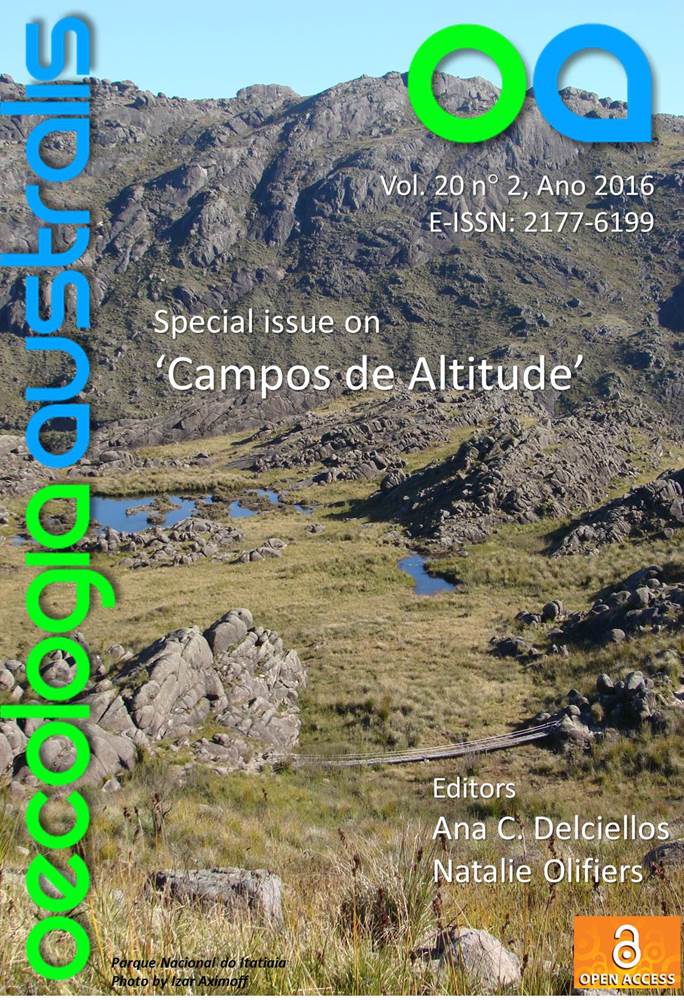BROMELIACEAE FROM CAPARAÓ NATIONAL PARK, MINAS GERAIS/ESPÍRITO SANTO STATES, BRAZIL, WITH NOTES ON DISTRIBUTION AND CONSERVATION
DOI:
https://doi.org/10.4257/oeco.2016.2002.10Keywords:
Mountain, Conservation unit, Vriesea, Epiphyte, Atlantic forest, ChecklistAbstract
The Brazil is an important representative of the diversity of Bromeliaceae, having 72% of genera and 38% of the species. In the Atlantic Forest, where the family is the fourth most diverse, the hight altitude grassland are na important environment for concentrated endemic species. The Serra do Mar and Mantiqueira are important hight altitude grassland environment that occur in southeastern Brazil. In this latter is located the Caparaó National Park (CNP) presenting predominance of tropical rain forest and hight altitude grasslands, however, according to altitude, other environments can be recognized. This study aimed to generate a list of the species of Bromeliaceae from the CNP, providing data on the distribution of species in different environments and at different elevations, and analyze whether species are common or rare, as well as implications for conservation. We recorded 46 species in 12 genera. The high altitude grassland had the lowest number of species, however, many of them were found only in this type of environment. The riparian forest were the richest, due to moisture and substrate diversity that had the highest number of species with more than one type of substrate preference. The altitudinal quota that has the higher species richness was 1000-1500m, comprising the riparian forest and slope forest. Only 9% of the species were considered common, whereas 32% were the rarest, and are species with restricted geographic distribution, specific habitat and varying only according to the local population size. Four species are included in the list of endangered species of Brazilian flora, and Neoregelia brownii, with the highest form of rarity (F7), is categorized as critically endangered. The several environments distributed along the altitudinal gradient of CNP proved to be a vegetation mosaic important for the conservation of Bromeliaceae because it covers endangered species of restricted distribution and classified as rare.Downloads
Download data is not yet available.
Downloads
Additional Files
- figuras (Português (Brasil))
- camiladebarros, Figures2.docx (Português (Brasil))
- camiladebarros, Figures.docx (Português (Brasil))
- camiladebarros, Carta Resposta.doc (Português (Brasil))
- camiladebarros, Figure1_Machado et al..tif (Português (Brasil))
- camiladebarros, Figure5_Machado et al..tif (Português (Brasil))
Published
2017-02-23
Issue
Section
Articles


